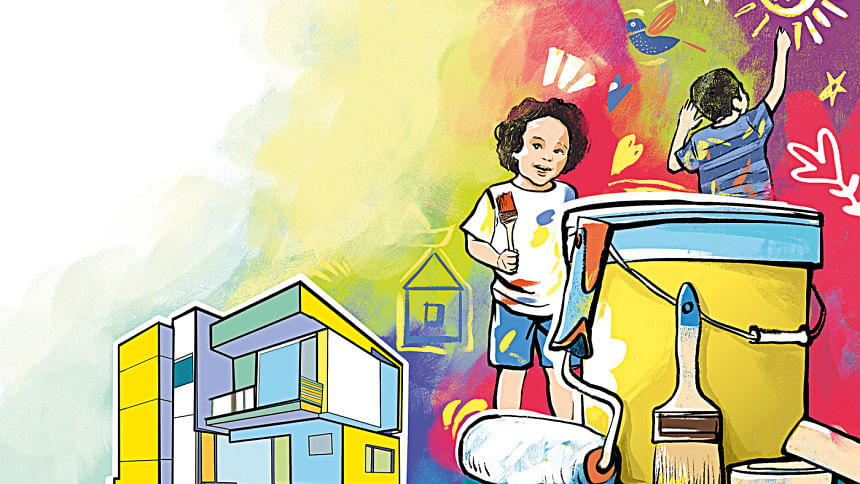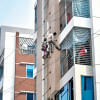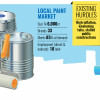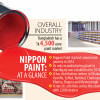Brushing bold strokes

From high-rise apartments in Dhaka to rural homesteads and factory facades, a quiet revolution is colouring the landscape of Bangladesh—one coat at a time. The country's paints and coatings industry, once a niche segment, has steadily grown into a vibrant sector that straddles both decoration and durability. And behind every freshly painted wall lies a story of economic transformation, consumer aspiration, and industrial innovation.
Though officially classified as a luxury item, paint is no longer seen as a mere aesthetic add-on. It has become essential to modern construction—shielding structures from the elements, improving longevity, and defining the character of homes and workplaces alike.
That evolution is no accident. As Bangladesh strides toward middle-income status, spurred by rapid urbanisation, infrastructure megaprojects, and a property boom, the demand for paints has surged. Or at least, it did—until recently.
"We're now navigating a period of stagnation," says Md Mohsin Habib Chowdhury, Chief Operating Officer of Berger Paints Bangladesh Limited and President of the Bangladesh Paint Manufacturers Association. "Last year we saw flat growth following a negative trend the previous fiscal year. Persistent inflation, foreign exchange instability, import constraints, and policy uncertainty have all combined to delay consumer spending—especially in construction and home improvement."
Still, the broader picture remains one of resilience. The industry, composed of some 42 local firms and five multinational giants, now generates over BDT 100 crore in annual revenue and directly supports employment across the value chain—from factory floors to retail showrooms and painter communities.
The paint sector as a whole produces nearly 33 crore litres of paint annually, with industrial applications accounting for 65 percent and domestic use for the remaining 35 percent.

The sector's strength lies not just in quantity, but in its ability to innovate. Companies are pushing the boundaries of what paint can do—introducing eco-friendly formulas, AI-based shade recommendations, and immersive digital tools for home customisation.
"Innovation at Berger is deeply rooted in our commitment to sustainability and environmental stewardship," adds Chowdhury. "It's about offering value beyond the product."
That sentiment is echoed by others in the field. Shayaan Seraj, Director of Aqua Paints, part of the Elite Group, explains how technology is reshaping customer experience: "Our InstaColor machines offer thousands of shades, with AI-driven mood and lighting suggestions. We provide on-site sampling, 2D/3D mock-ups, and even textured finishes like exposed brick to cater to contemporary interior trends."
But painting walls isn't just about what's in the can. It's also about the hands that apply it. That's why companies are increasingly investing in the professional development of painters—offering training in techniques, safety, and even colour psychology.
"At Dulux, we're going beyond product sales," says Syed Salahuddin Abu Naser, Business Director of Dulux Paints Bangladesh under ACI Formulations. "We train painters and contractors not just in application but in providing aesthetic guidance—so that from mixing to finishing, expertise is embedded at every stage."
Despite the enthusiasm, challenges loom large. The industry is highly import-dependent, with nearly all raw materials sourced internationally. That makes it vulnerable to global price fluctuations and currency crises—issues that have intensified over the past two years.
Another concern is market maturity. With per capita paint consumption still hovering around 1.4 kilograms—well below neighbouring countries—companies are focusing on affordability to drive volume.
"We maintain a tiered product portfolio to serve every income group," says Budhaditya Mukherjee, Regional Head of Asian Paints International. "From economy emulsions to premium finishes, our commitment to quality remains constant."

While most of the current production serves local demand, there are growing ambitions to turn Bangladesh into a regional manufacturing hub for paints and coatings. Some firms are already gearing up for export.
"We've got the infrastructure to serve both domestic and industrial segments—whether it's powder coating for machinery or colour for living rooms," says R. N. Paul, Managing Director of RFL Group, which owns Rainbow Paints. "We're optimistic that Bangladesh can become a global supplier in the near future."
Meanwhile, Nippon Paint Bangladesh is blending Japanese precision with local relevance. "We see this market as dynamic and full of potential," says Rajesh Sircar, the company's General Manager. "Our role is to empower people to realise their dream spaces—whether through colour, protection, or inspiration."
As Bangladesh continues to build upwards and outwards, the paints and coatings industry remains a quiet but critical partner—adding more than just colour to the nation's development. It adds confidence, creativity, and a finishing touch to the country's growth story.

 For all latest news, follow The Daily Star's Google News channel.
For all latest news, follow The Daily Star's Google News channel. 







Comments